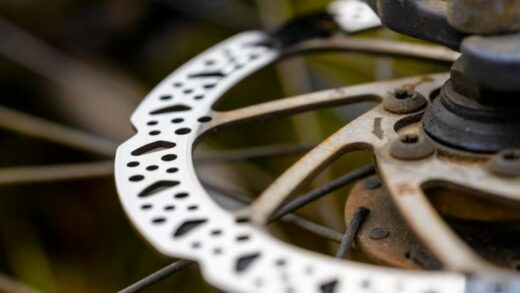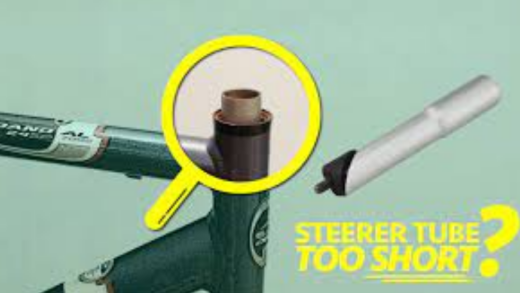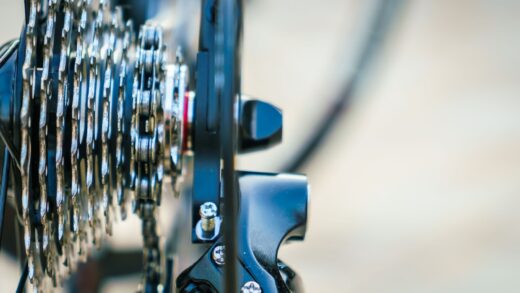The front derailleur on your bicycle plays a pivotal role in enabling smooth gear changes. This intricate mechanism allows for seamless shifting across multiple gears, enhancing your riding experience. However, to ensure the optimal performance of your front derailleur, mastering the art of proper cable routing is essential. Whether you’re a beginner or a seasoned cyclist, understanding the nuances of front derailleur cable routing can significantly impact your gear-shifting efficiency.
Unraveling the Essentials of Front Derailleur Cable Routing
The complexity of front derailleur cables can be overwhelming for cyclists at all skill levels. To demystify this essential aspect of your bike’s drivetrain, we’ve compiled a comprehensive guide to front derailleur cable routing.
Size Matters: Front Derailleur Compatibility
Front derailleur cable routing begins with understanding the size of your front derailleur. This knowledge not only influences cable routing but also affects compatibility, especially when using components from different manufacturers.
Front derailleur sizes are determined by the clamp size, typically available in three diameters: 28.6 mm, 31.8 mm, and 34.9 mm. These clamp sizes are associated with specific saddle positions and types, impacting your bike’s overall setup.
Installation and Replacement
Installing or replacing front derailleur cables might seem daunting, but armed with the right tools and knowledge, it becomes a manageable task. To ensure a successful installation or replacement, follow these steps:
- Removing the Old Cable: Loosen the cable fixing bolt with a hex key, then cut and remove the old cable;
- Routing the New Cable: Cut the new cable to match the length of the old one. Insert it through the shifters and frame, using ferrules to secure it in place;
- Cable Tension Adjustment: Adjust the cable tension to ensure optimal shifting. A balanced tension prevents difficulties in turning your bike’s handle and potential risks during rides.
Types of Cable Pull
Understanding the concept of cable pull is crucial in front derailleur cable routing. There are three main types:
- Bottom Pull: The cable is pulled from beneath the bottom tube, alongside the bottom bracket;
- Top Pull: The cable is pulled from above, passing through the top tube before dropping;
- Dual Pull: Allows cable pulling from both the top and bottom, providing versatility for various frame designs.
Selecting the appropriate cable pull type aligns with your frame design and riding style.
Comparison Table: Front Derailleur Cable Pull Types
| Cable Pull Type | Description |
|---|---|
| Bottom Pull | Cable routed through the bottom tube beside the bottom bracket. |
| Top Pull | Cable routed through the top tube and dropped. |
| Dual Pull | The cable can be pulled from both the top and bottom, offering versatility. |
In this article, we’ll delve into the intricacies of front derailleur cable routing, providing you with essential information to enhance your gear-shifting experience.
Expert Tips for Cable Routing
- Precision and Patience: Install cables carefully and patiently to avoid accidents caused by improperly installed cables;
- Greasing Guidelines: Apply a moderate amount of grease to cables for smooth operation, avoiding excessive grease that can lead to issues;
- Even Pressure Distribution: Distribute pressure evenly along the cable to keep it firm and secure.
By grasping the intricacies of front derailleur cable routing, you can optimize your bike’s gear-shifting performance, ensuring every ride is smooth and efficient.

Video Guide
We suggest you watch the video, in which you will get a more detailed explanation.
Conclusion
Front derailleur cable routing is a critical aspect of achieving efficient gear shifting. By understanding cable pull types, proper installation techniques, and maintenance practices, you can ensure smooth and precise shifting during your rides. Follow this comprehensive guide to master front derailleur cable routing and enhance your overall cycling experience.
FAQ
No, the size of the front derailleur depends on the clamp size, which varies based on the frame’s design.
While specialized tools like a cable cutter and hex keys are helpful, they are not always necessary. Basic tools can also get the job done.
Cable replacement frequency depends on usage and maintenance. Regular inspections and replacements can prevent unexpected failures.






